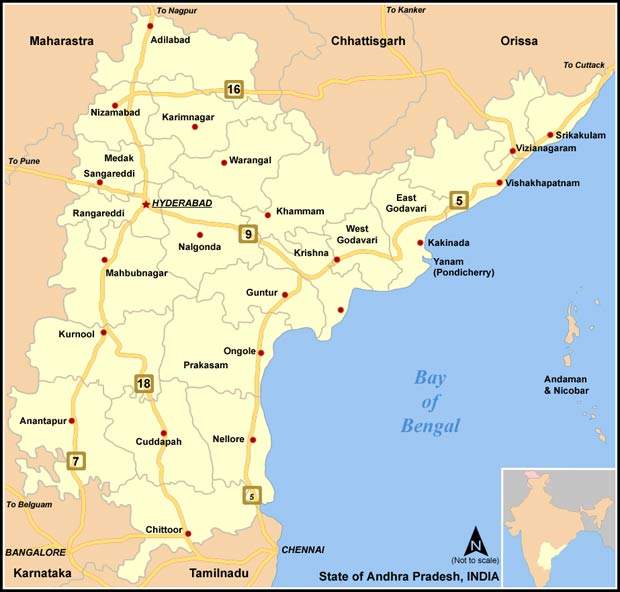Gujarat State Petroleum Corporation (GSPC) discovered a 5,656m-deep gas column in the KG-21 well in the Krishna-Godavari Basin (Deendayal Block) in Andhra Pradesh, South India. Earlier, GSPC, which is promoted by the state government of Gujarat in Western India, was allotted the KG exploration block under the third phase of the new exploration licensing policy (NELP-III) along with Jubilant Enpro Ltd and Geo Global Resources.
The block includes an area of 1,850km² on the KG basin. GSPC is the main operator, with an 80% participating interest. GSPC has already spent more than $0.4bn on drilling ten wells in a 120km² offshore area and plans to dig five further wells.
GSPC acquired 3D seismic data and started drilling activity in July 2004.
The company initially found 20.3 million cubic metres of gas a day. The KG-21 well is estimated to produce more than 100 million cubic feet of gas a day. This is subject to approval by the director general of hydrocarbons (DGH), Ministry of Petroleum & Natural Gas, Government of India.
Earlier the DGH commercially certified a gas discovery of 1.26 trillion cubic feet (tcf) in KG-22 well. GSPC had claimed a commercial potential of 5.6tcf before the DGH, but the DGH has certified a minimum discovery of 1.26tcf, which is subject to upward revision on a more detailed appraisal.
According to GSPC, a total investment of $1.5bn is to be made in exploration and transporting gas from Krishna-Godavari basin to Gujarat.
GSPC has already invested more than $800m in the KG Project.
Krishna Godavari Basin precedents
In 2005 GSPC announced that it had discovered reserves of 20tcf of gas in the Krishna Godavari basin, off the east coast of India. It invited bids from international energy companies to sell a 30% stake in its find in the basin.
In response to GSPC’s bid, 11 companies expressed their interest in acquiring the stake. Four companies – BG of the UK, BP, Chevron of the US and ENI of Italy were shortlisted. GSPC would share data collected during the drilling of its wells.
The four companies submitted their technical bids in June 2006. Meanwhile GSPC reopened the entire process and allowed more firms access to its data. Among the companies that joined the race at this stage were Exxon Mobil of the US, Total of France, Statoil (UK) of Norway, Repsol of Spain and Husky Energy of Canada.
Technology support
GSPC’s KG Block being a deepwater offshore block, the extraction of gas requires advanced technology and GSPC is to acquire such technology. GSPC has already spent $450m on its exploration activities in the block.
The consortium
GSPC has been allotted the KG exploration block under the NELP-III along with other consortium partners Jubilant Enpro Ltd and Geo Global Resources.
GSPC holds an 80% stake in the block while Jubilant Enpro holds 10% and GeoGlobal Resources (GGR) of Canada and GGR chairman JP Roy hold 5% each.
GAIL, GSPC pipeline
Gas Authority of India Ltd (GAIL India) and Gujarat State Petroleum Corporation (GSPC) submitted proposals to the Petroleum & Natural Gas Regulatory Board (PNGRB) to build a 1,400km-1,500km pipeline connecting the Krishna Godavari basin in the eastern coast to central India.
GSPC has put up 1,200km of gas grid covering 14 districts of Gujarat at a cost of more than half a billion dollars. These pipelines transport about 18mmscmd of gas. GPSC’s gas supply caters to 30 big industrial and power sector consumers, 300 small and medium industries and 250,000 domestic customers.
The proposed pipeline would enable easier transportation of gas from the Krishna Godavari basin to areas of northern India.





